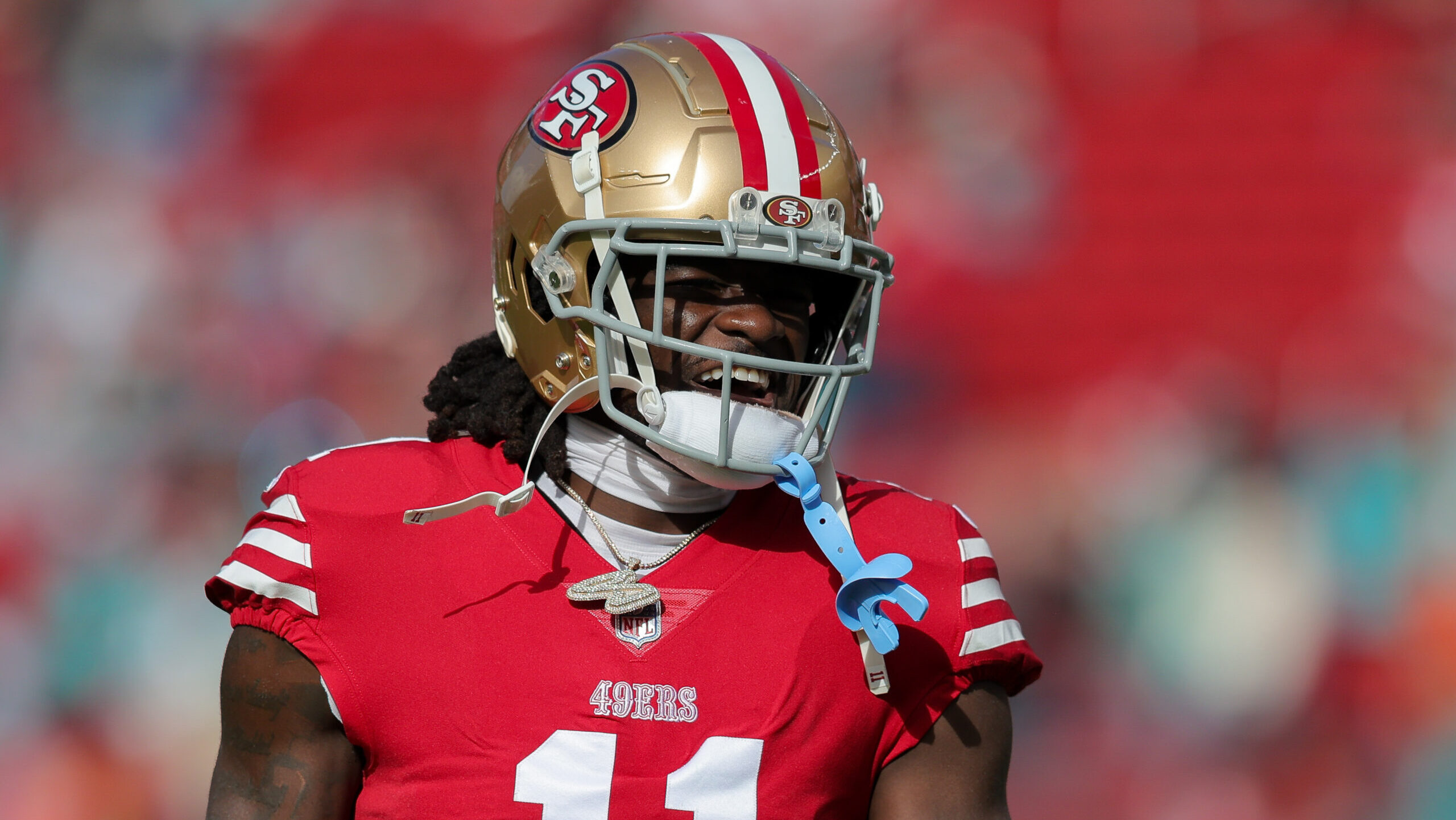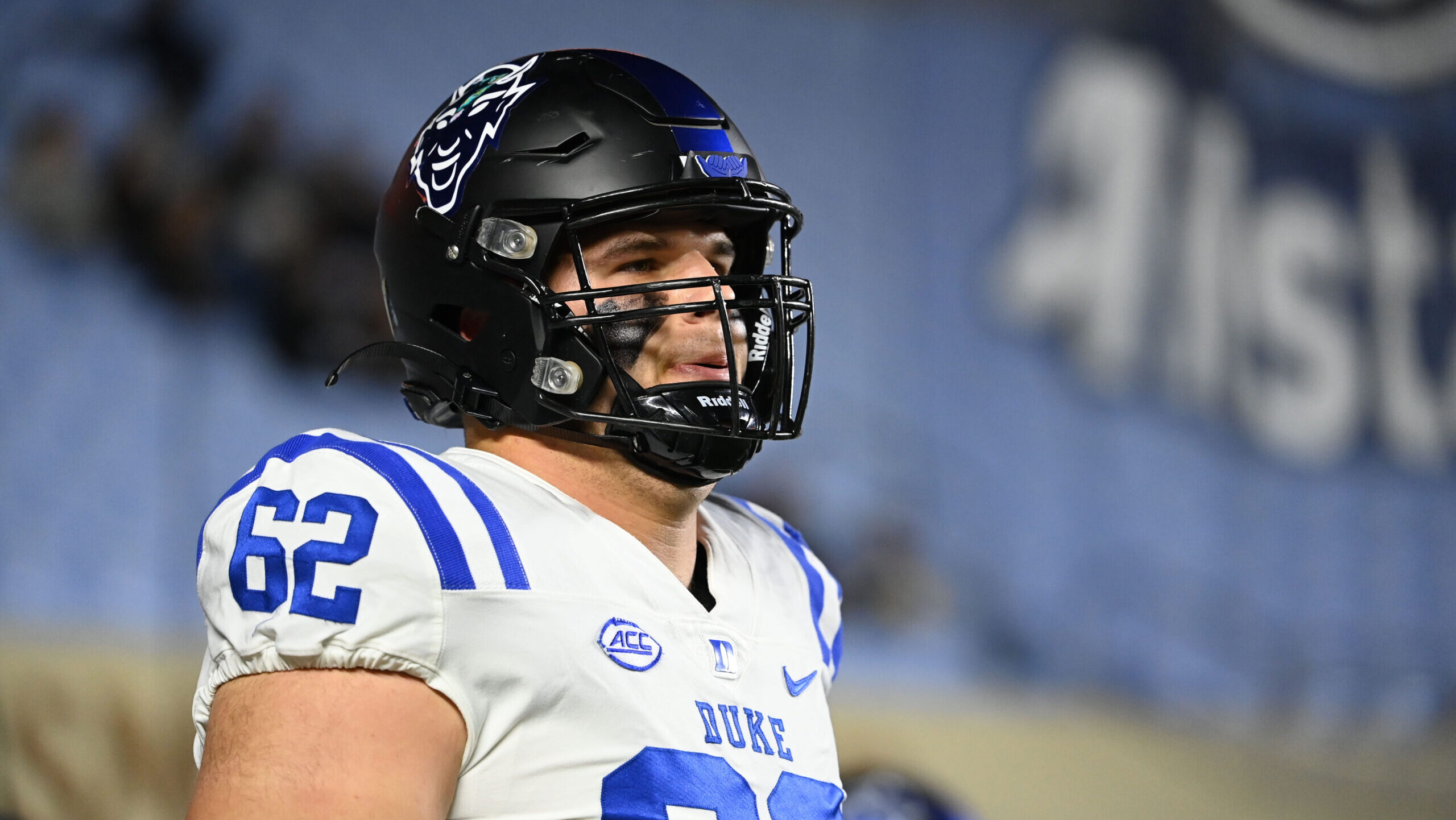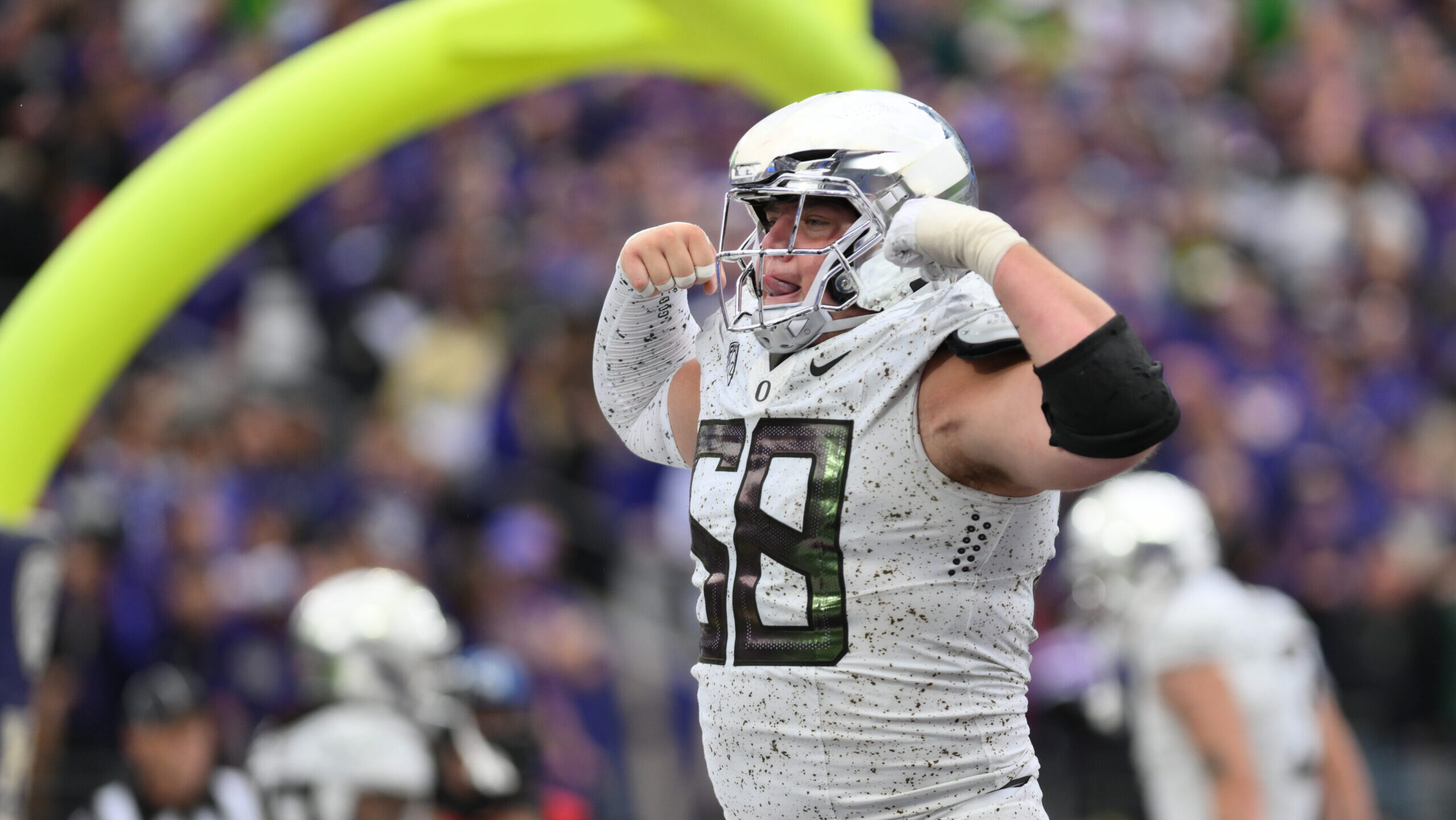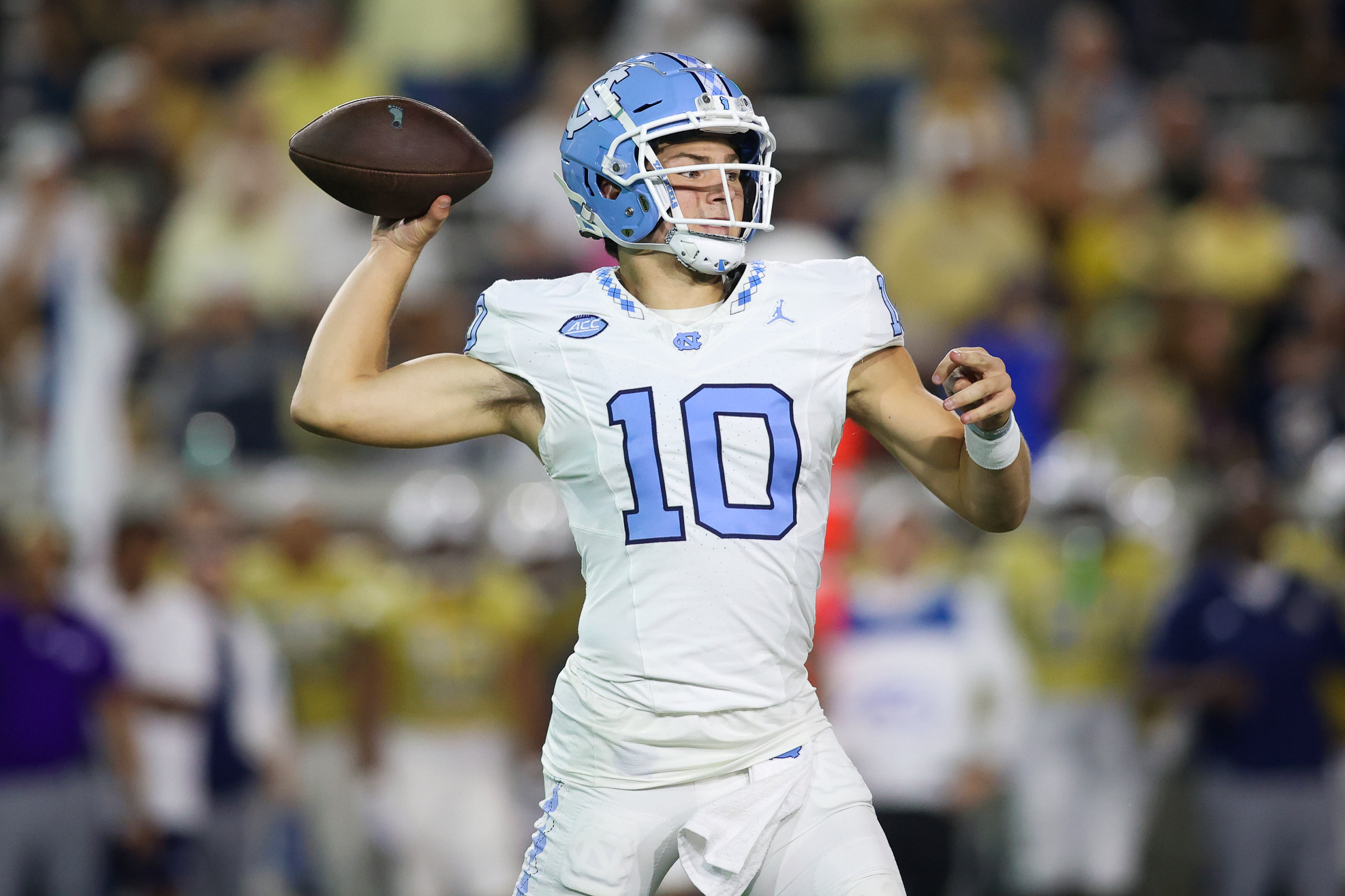Analysis
4/13/23
11 min read
Digging Deep: Each NFL Team's Best Late-Round Draft Gem
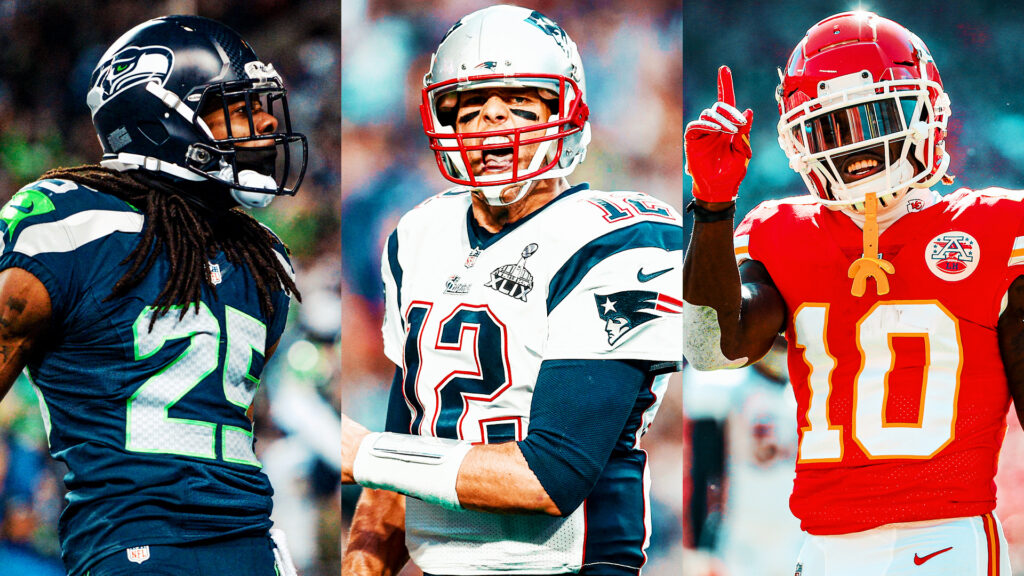
While fans are yawning or even tuning out well into the 2023 NFL draft (Saturday afternoons in late April can be enjoyable outdoors (the folks doing business at each of the 32 teams are digging deep. They are searching for the diamonds in the rough, the player who unexpectedly becomes a star.
Here are the gems those franchises have found, guys who could have been forgotten but, instead, became foundational pieces. Maybe even Hall of Famers.
Others in this Series:
- Best First-Round NFL Draft Picks for Each Team
- Every NFL Team’s Biggest First-Round Draft Mistake
- Top 10 Draft Classes Since 2012
- 10 Worst Classes Since 2012
- Nine Best Drafting Teams Since 2000
- Ranking No. 1 Overal Picks Since 2000
- Every NFL Team's First-Round Bargains
Every Team's Top Late-Round Find
 Arizona Cardinals
Arizona Cardinals
S Larry Wilson, 1960 (Round 7, 74th overall)
If Larry Fitzgerald is the top first-rounder in this wandering franchise’s draft history (which he is (then Wilson is the jewel of the late rounds. A prototype of the blitzing safety, Wilson also made 52 interceptions on his way to the Hall of Fame. The ultimate team leader, too.
 Atlanta Falcons
Atlanta Falcons
OC Jeff Van Note, 1969 (Round 11, 262)
Occasionally, Van Note’s name comes up in Hall of Fame conversations in the Senior category. He’s the best offensive lineman in team history, appearing in 246 games and making six Pro Bowls in an era with strong centers.
 Baltimore Ravens
Baltimore Ravens
P Sam Koch, 2006 (Round 6, 203)
Yep, a punter. We know this is when teams usually seek kicking specialists. But how many turn out as successful as Koch, who spent 16 seasons as a weapon for the Ravens? Only seven of his 1,168 punts were blocked. He was even seven-for-eight passing on fakes, scored a touchdown and a 2-point conversion.
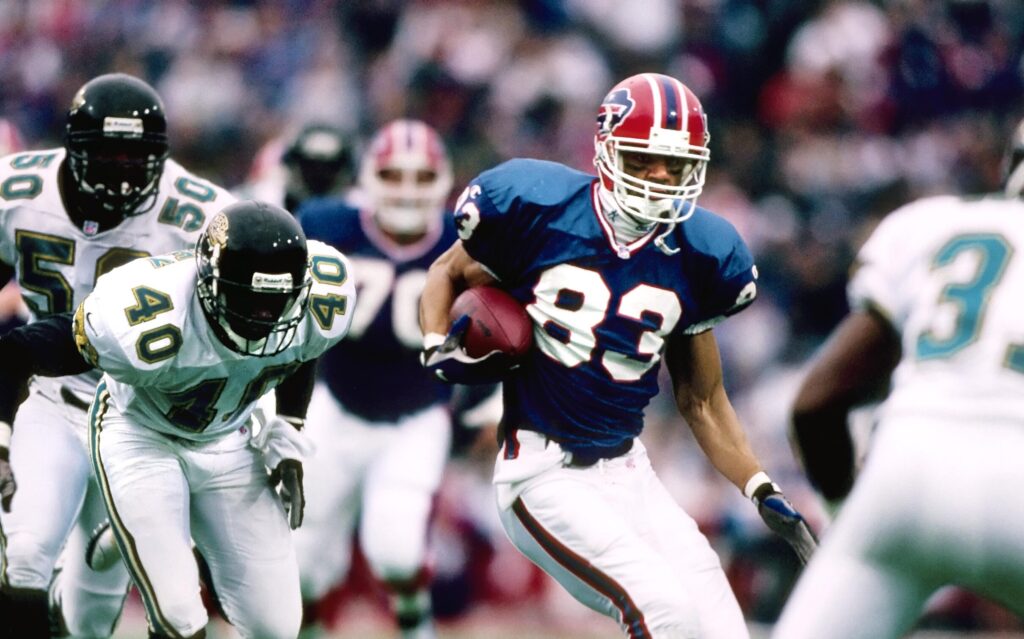
 Buffalo Bills
Buffalo Bills
WR Andre Reed, 1985 (Round 4, 86)
Kutztown State? Discovering a future Hall of Fame receiver at such a small school is rare, and Reid was a key to the K-Gun offense the Buffalo Bills used to win four straight AFC titles. In all, Reid went to seven Pro Bowls and amassed 13,198 yards receiving with 87 touchdowns.
 Carolina Panthers
Carolina Panthers
CB Josh Norman, 2012 (Round 5, 143)
The Carolina Panthers haven’t gotten a lot out of the later rounds, and Norman spent his first four seasons with Carolina before striking it rich as a free agent thanks to his All-Pro 2015 season. He returned to the Panthers last season as a backup after stops in Washington, Buffalo and San Francisco.
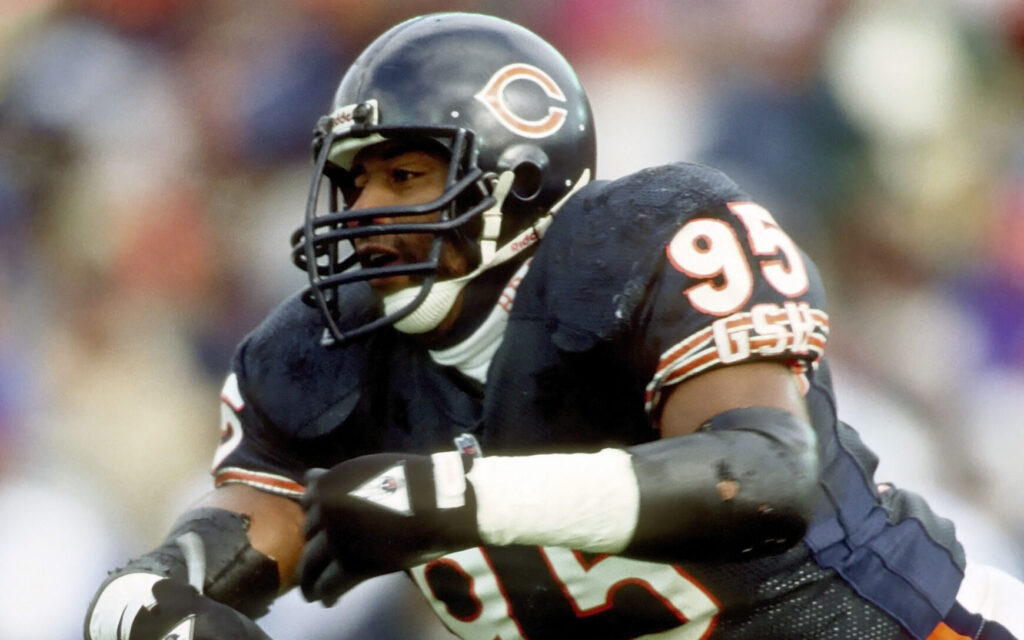
 Chicago Bears
Chicago Bears
DE Richard Dent, 1983 (Round 8, 203)
A rare defensive player with a Super Bowl MVP honor, Dent was a dominant pass rusher on the most overpowering defense of its time. He had 17 sacks for the 1985 champions, also forcing an unreal seven fumbles, recovering two and scoring a touchdown. He finished his career with 137.5 sacks.
 Cincinnati Bengals
Cincinnati Bengals
CB Ken Riley, 1969 (Round 6, 135)
Paul Brown always was a pioneer as a coach and owner, and he never hesitated to select players from historically Black colleges. Riley developed rapidly into one of the top cover cornerbacks in the pros, with 65 interceptions and five touchdowns during a 15-year career, all with the Cincinnati Bengals. He enters the Hall of Fame in August.
 Cleveland Browns
Cleveland Browns
OG Gene Hickerson, 1957 (Round 7, 78)
The long history of the Cleveland Browns is filled with Hall of Famers who came late in drafts (including such future coaches as Chuck Noll and Don Shula. Many of those picks starred elsewhere, so it came down to impact players mainly in Cleveland. In his 15 seasons (he missed one for injury), Hickerson was a prime blocker for Jim Brown and Leroy Kelly, making six Pro Bowls. He started every game in each of his final eight seasons.
 Dallas Cowboys
Dallas Cowboys
QB Roger Staubach, 1964 (Round 10, 129)
Because of his military commitment, the Heisman Trophy-winning quarterback wasn’t a high draft choice. Who wanted to wait for someone, particularly at that position? Well, the Dallas Cowboys did and were rewarded with a Hall of Fame career that included two Super Bowl titles. “Roger the Dodger” also was one of the most resourceful scrambling quarterbacks of his generation.
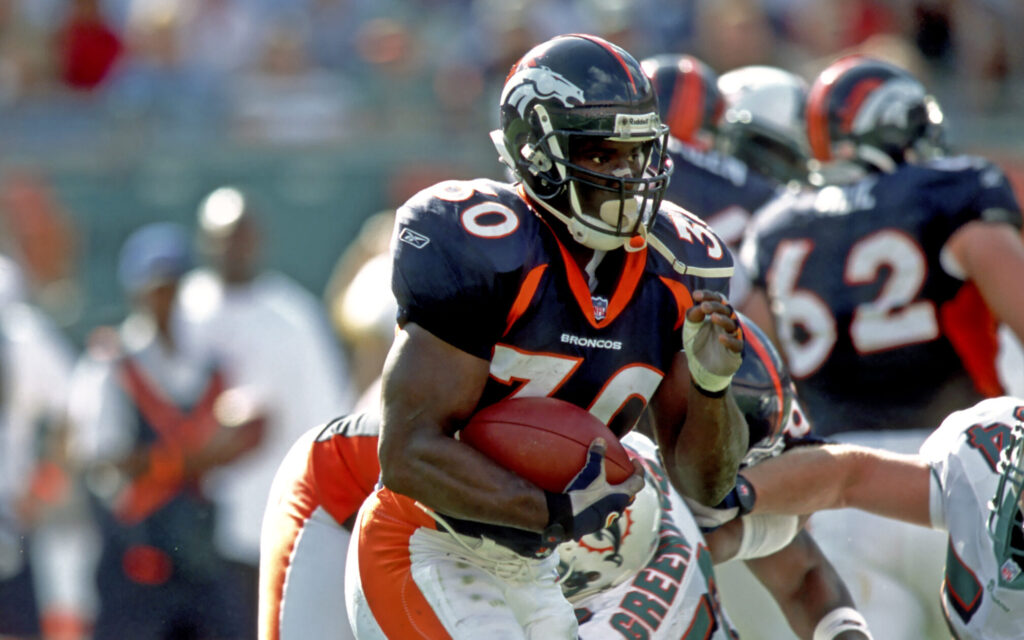
 Denver Broncos
Denver Broncos
RB Terrell Davis, 1995 (Round 6, 196)
The Denver Broncos had a knack for finding low-round running backs who became standouts. Davis is the prime example, and even though his career was shortened by injury, he was among the greatest postseason performers in league history. The two-time Offensive Player of the Year and 1998 league MVP with 2,008 yards rushing, ran for 1,140 yards and 10 TDs in eight postseason games.
 Detroit Lions
Detroit Lions
LB Joe Schmidt, 1953 (Round 7, 86)
The Detroit Lions defender with the loudest, most effective roar was Schmidt. A team leader on and off the field, Schmidt was a 10-time Pro Bowler, who one season pounced on eight fumbles. The anchor of the Lions’ last title squad in 1957, he often was compared favorably to fellow Hall of Famers Ray Nitschke and Chuck Bednarik.
 Green Bay Packers
Green Bay Packers
QB Bart Starr, 1956 (Round 17, 200)
Tom Brady was not the only No. 199 overall selection to make it big. Starr was the offensive engineer of the Green Bay Packers’ dynasty in the 1960s. He didn’t grab a lot of headlines, instead grabbing championship rings. So precise as a passer, he led the NFL in completion percentage and passer rating four times each; remember, he was often playing on the tundra.
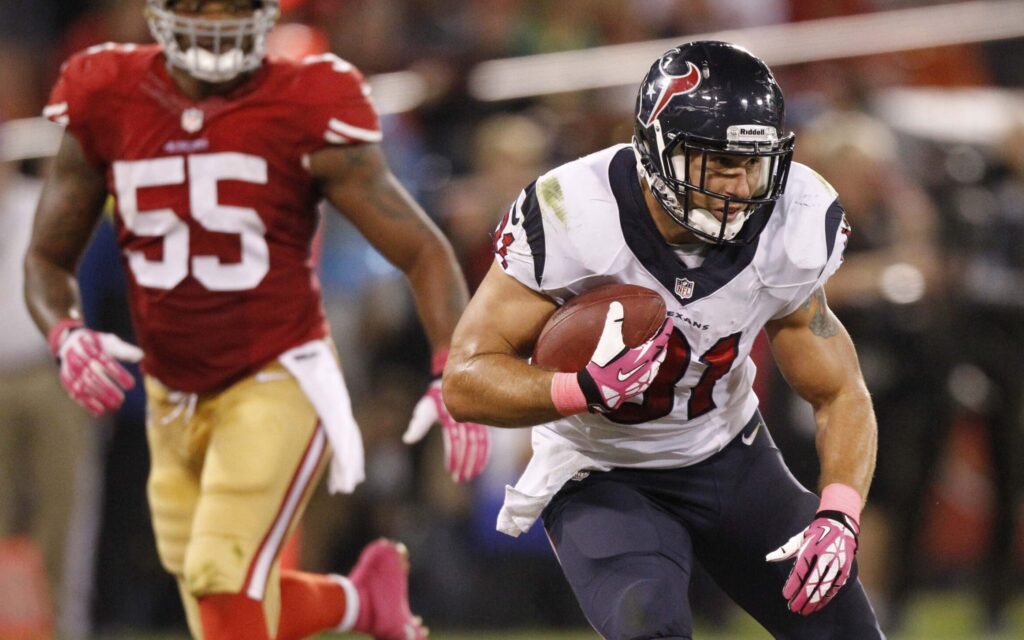
 Houston Texans
Houston Texans
TE Owen Daniels, 2006 (Round 4, 98)
There's not much to choose from for this underachieving franchise, but Daniels was a starter for most of his eight seasons in Houston. He made 385 receptions for 4,617 yards and 29 touchdowns, making two Pro Bowls before closing his career in Denver on the 2015 champion Broncos.
 Indianapolis Colts
Indianapolis Colts
WR Raymond Berry, 1954 (Round 20, 232)
Too light, too slow, with few college stats to make him a potential pro standout. That was how Berry was regarded by the NFL. Then, he became one of the best pass catchers in league history, teaming with John Unitas in Baltimore and winning championships. He was as clutch a receiver as the NFL has seen.
 Jacksonville Jaguars
Jacksonville Jaguars
DL Rob Meier, 2000 (Round 7, 241)
Anything a team can get from this low in the draft is a bonus, and Meier gave the Jacksonville Jaguars nine serviceable seasons. The Canadian played in 139 games at defensive end or tackle. His best year was 2006 with five sacks and seven quarterback hits.
 Kansas City Chiefs
Kansas City Chiefs
WR Tyreek Hill, 2016 (Round 5, 165)
We could go way back in Kansas City Chiefs history to highlight other great late picks, but Tyreek Hill is deserving for his game-breaking skill, route-running prowess and ability to beat single or double coverage. His partnership with Patrick Mahomes helped Kansas City win its first Super Bowl in a half-century.
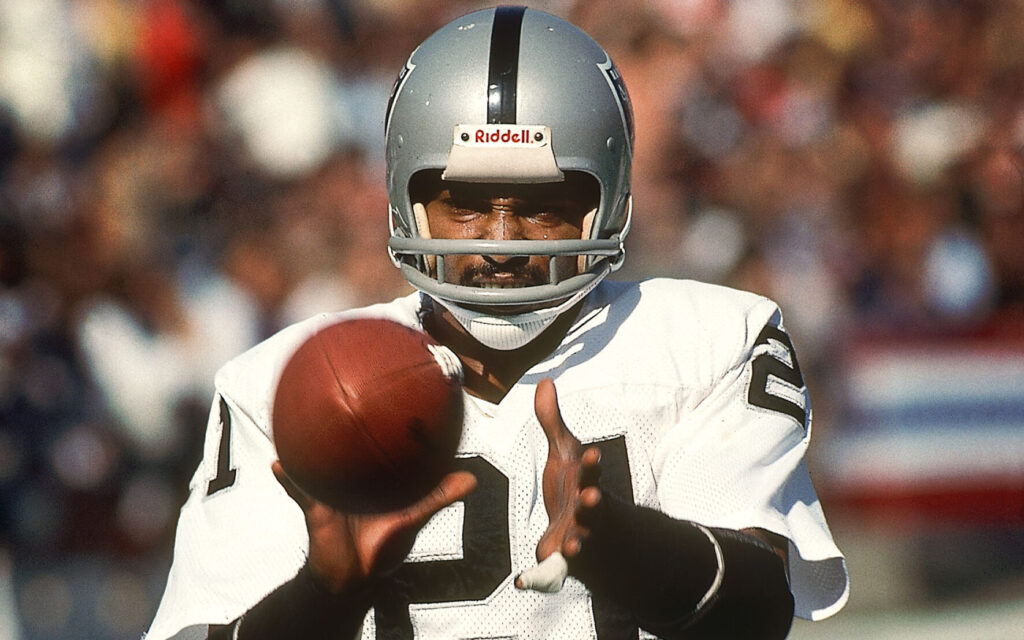
 Las Vegas Raiders
Las Vegas Raiders
WR Cliff Branch, 1972 (Round 4, 98)
Bo Jackson comes to mind, considering the Raiders got him in the seventh round in 1987 after he refused to join the Buccaneers as the No. 1 overall choice the previous year; Branch was more impactful over a longer career. The recent Hall of Fame entry was the most dangerous deep receiver in the game for pass-happy Oakland, including a 17.3-yard average and 67 TDs.
 Los Angeles Chargers
Los Angeles Chargers
DE Shaun Phillips, 2004 (Round 4, 98)
Lots of options for the Bolts, from Ernie Ladd to Rodney Harrison, Billy Shields to Woodrow Lowe. Phillips was the biggest contributor in San Diego, though, with 477 tackles, 69.5 sacks, 20 forced fumbles and 10 recoveries. He was a consistent force on every down.
 Los Angeles Rams
Los Angeles Rams
DE David “Deacon” Jones, 1961 (Round 14, 186)
The most fearsome of the Fearsome Foursome, Jones popularized the term sack (even though bringing down the quarterback was not an official stat during his career. Before Jones, mobility and speed were not associated with defensive linemen. Afterward, they were required.
 Miami Dolphins
Miami Dolphins
LB Zach Thomas, 1996 (Round 5, 154)
Undersized and considered a “tweener,” Thomas didn’t impress many pro coaches. But he caught the eye of Miami Dolphins special teams coordinator Mike Westhoff during a workout. Miami selected Thomas, and by the end of his first training camp, he was a starter. He was also one of the best kick team players of his generation.
 Minnesota Vikings
Minnesota Vikings
OC Matt Burk, 1998 (Round 6, 173)
A full list going back to DB Bobby Bryant in 1967, and people mostly with linemen, including Ivy League center Birk. The Minnesota Vikings have a rich history of blockers, and Birk was as good as any for 146 games and six Pro Bowl appearances. He started 187 of 210 career outings, including his final four seasons in Baltimore.
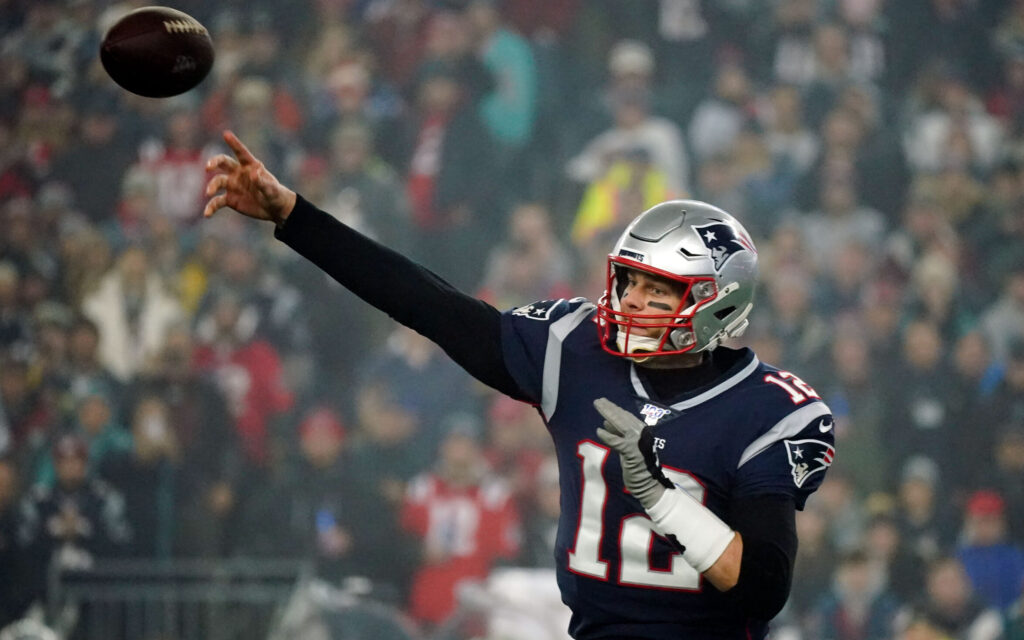
 New England Patriots
New England Patriots
QB Tom Brady, 2000 (Round 6, 199)
The seven-time Super Bowl champion and overriding foundation of the New England Patriots’ dynasty took over early in 2001 for an injured Drew Bledsoe and never stopped winning. His five Super Bowl MVP rings aren’t likely to be matched, and the length and breadth of his career are unparalleled.
 New Orleans Saints
New Orleans Saints
K Morten Andersen, 1982 (Round 4, 86)
We can’t ignore the NFL’s all-time leading scorer, even if Andersen collected his points with five teams. Through his first 13 seasons in the Big Easy, he was Mr. Automatic. Andersen made seven Pro Bowls for the New Orleans Saints, nailing decisive and long kicks with regularity in a time when a 50-yarder was a big deal.
 New York Giants
New York Giants
OT Roosevelt “Rosey” Brown, 1953 (Round 27, 321)
One of the breakthrough Black players for the franchise, Brown was a fixture at left tackle in New York for 13 seasons. He started 159 of 162 games and handled some of the NFL’s toughest defensive linemen. Brown made eight Pro Bowls, played for one league champion and in five other title contests.
 New York Jets
New York Jets
DL Joe Klecko, Temple, 1977 (Round 6, 144)
How many defensive linemen dominate at three positions? Only one has made the Pro Bowl at end, tackle and nose tackle: Klecko. A hero to New York Jets fans even as Sack Exchange teammate Marc Gastineau stole the spotlight, Klecko enters the Hall of Fame this summer. Injuries slowed his 12-season career, but when on the field, he was always a factor.
 Philadelphia Eagles
Philadelphia Eagles
WR Harold Carmichael, 1971 (Round 7, 161)
At 6-foot-8, 225 pounds, Carmichael not only was the tallest receiver around, he was often the tallest player on the field regardless of position. He was also among the most graceful in a 14-season career that, long overdue, landed him in Canton in 2020. Overmatching defensive backs with his size and linebackers with his speed, Carmichael, in 1973, caught a league-best 67 balls for 1,116 yards. He never stopped producing.
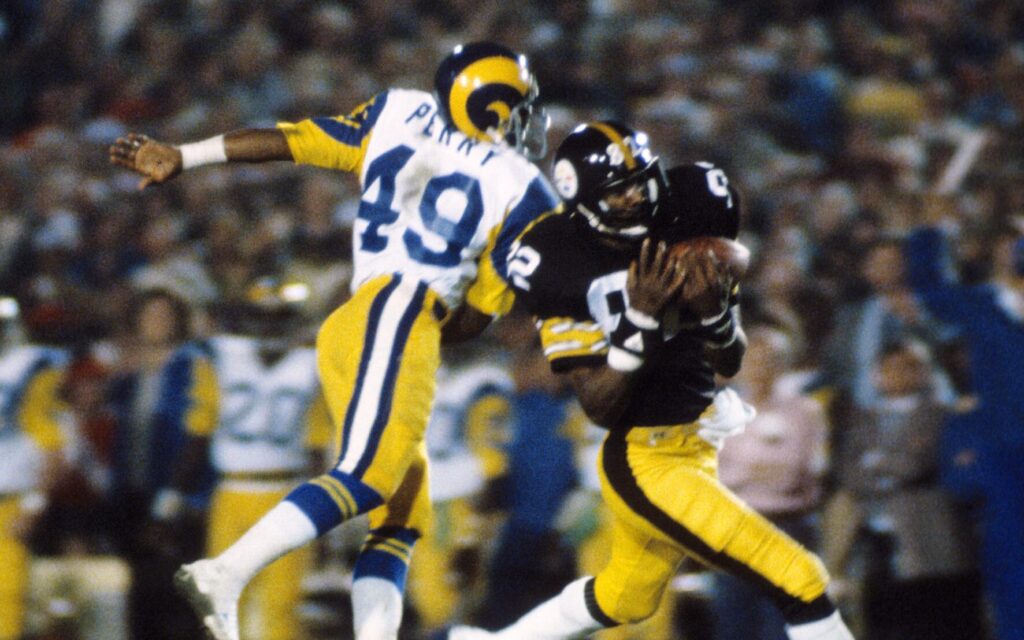
 Pittsburgh Steelers
Pittsburgh Steelers
WR John Stallworth, 1971 (Round 4, 82)
OC Mike Webster, 1971 (Round 5, 125)
How do you choose the brightest jewel of a franchise renowned for brilliant picks? We’re sticking with a pair of selections in 1971, just before the Pittsburgh Steelers launched its dynasty. Stallworth became the perfect complement to Lynn Swann and a better all-around receiver, landing Stallworth in the Hall of Fame with Swann. Webster was the epitome of the Steelers’ efficiently nasty offensive line. He went to nine Pro Bowls, Stallworth to three.
 San Francisco 49ers
San Francisco 49ers
DE-LB Charles Haley, 1986 (Round 4, 96)
A product of JMU before it became a football power, Haley was a force for the San Francisco 49ers and then the Cowboys on Super Bowl winners. A five-time Pro Bowler, he won just as many Super Bowls: two with the 49ers and three with the Cowboys. Haley was a sack master, compiling 100.5 for his career, two-thirds with the 49ers. He rarely was single-blocked.
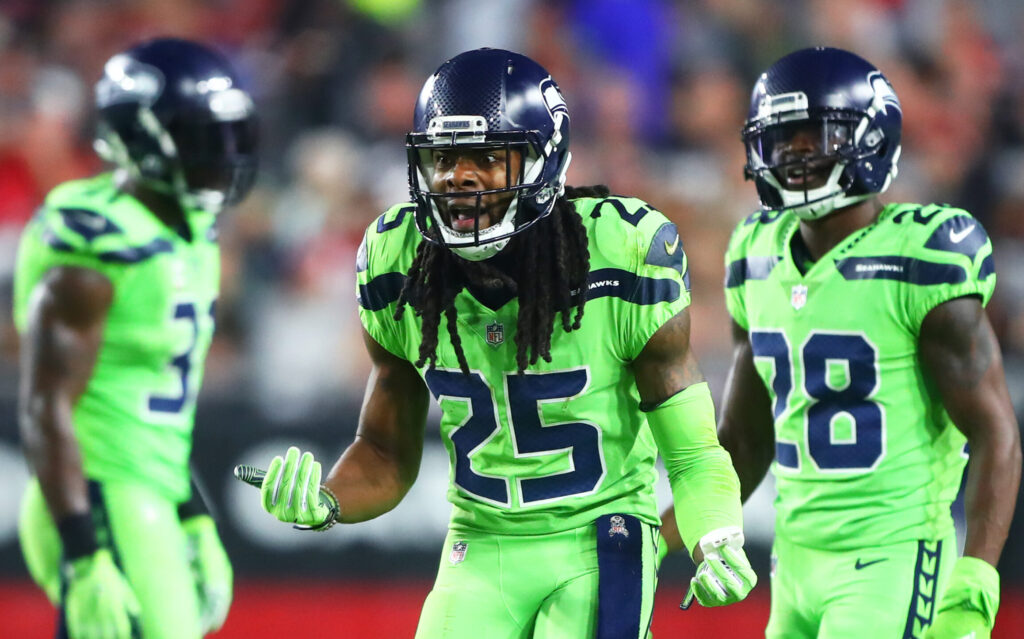
 Seattle Seahawks
Seattle Seahawks
CB Richard Sherman, 2011 (Round 5, 154)
A perennial All-Pro for his cover skills and big-play performances, Sherman also was among the most outspoken NFL players throughout his 11 pro seasons. He could shut down one side of the field in the passing game and was a factor against the run. Sherman had 37 picks, including a league-high eight in the Seattle Seahawks’ 2013 title season.
 Tampa Bay Buccaneers
Tampa Bay Buccaneers
DL Chidi Ahanotu, 1993 (Round 6, 145)
A solid performer in his nine seasons with the Tampa Bay Buccaneers, Ahanotu had 34.5 sacks in Tampa and was a fine supporting player for the likes of future Hall of Famers Derrick Brooks, John Lynch, Ronde Barber and Warren Sapp. A bargain at the spot Tampa Bay got him.
 Tennessee Titans
Tennessee Titans
WR Derrick Mason, 1997 (Round 4, 98)
The issue here is so many lower picks became standouts elsewhere, such as Hall of Fame DB Ken Houston and kick/punt returner Billy “White Shoes” Johnson. So we’ll go with Mason, perhaps the best wideout the Tennessee Titans version of the franchise has had. Mason, a key to the Titans’ only Super Bowl appearance, made 453 receptions for 37 touchdowns and was an outstanding punt/kickoff returner.
 Washington Commanders
Washington Commanders
LB Chris Hanburger, 1965 (Round 18, 235)
Although his forearm shiver eventually was outlawed from the game, Hanburger still had enough quality performances to make the Hall of Fame. Such as nine Pro Bowl years in 14 pro seasons. Something of a ballhawk for his position in those days, he made 19 picks. Hanburger also had 45.5 unofficial sacks.
Barry Wilner was a sportswriter for the Associated Press for 46 years. He has covered virtually every major sporting event, including 14 Olympics, 9 World Cups, 34 Super Bowls, the World Series, and the Stanley Cup Final, and has written 75 books. Follow him on Twitter @Wilner88


